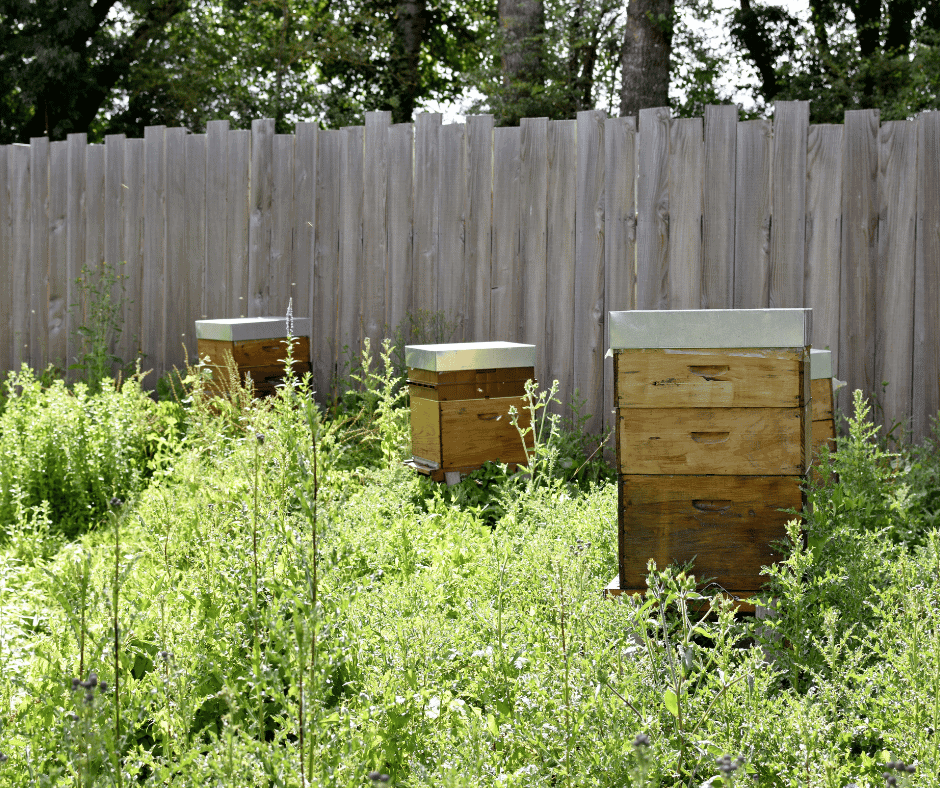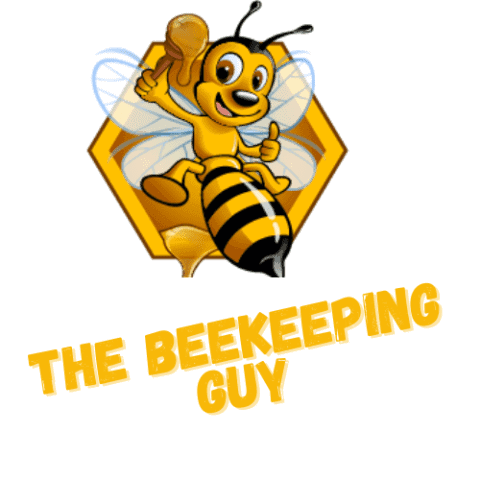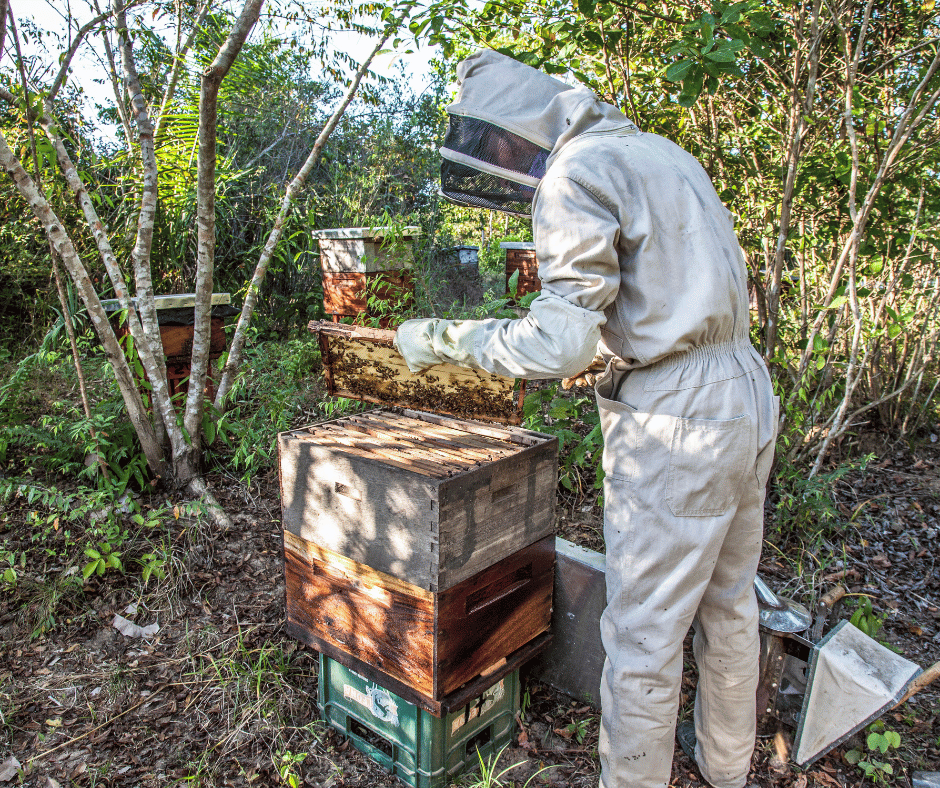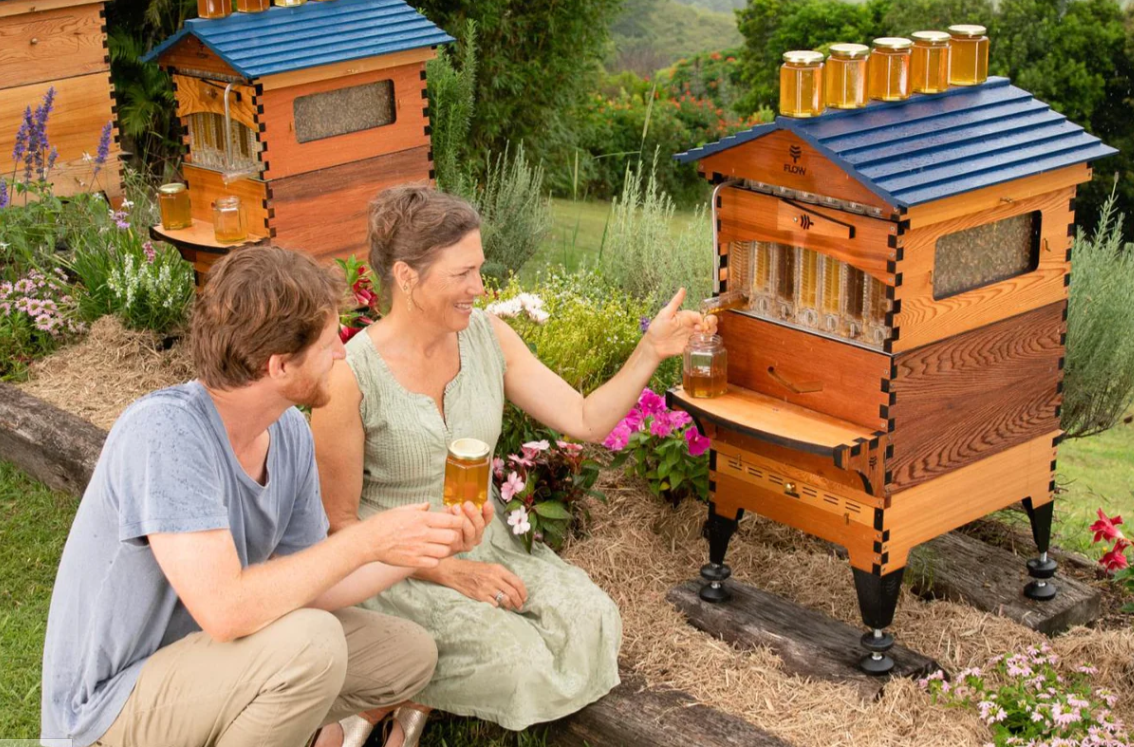
Are you interested in sustainable beekeeping? Want to learn about the equipment that can help you maintain healthy bee colonies?
In this article, we’ll explore the importance of sustainable beekeeping and the role equipment plays in achieving this goal. By adopting sustainable practices, you can contribute to the well-being of bees, protect biodiversity, and ensure the long-term health of our ecosystems.
Discover the essential equipment needed for sustainable beekeeping and create a thriving, environmentally friendly operation.
Let’s get started on this journey towards sustainable beekeeping practices.
Table of Contents
Key Takeaways
- Choosing hive types that mimic natural sites used by bees, such as hollow trees or wooden hives, is important for sustainable beekeeping.
- Minimizing stress on bees by avoiding excessive smoking during hive inspections is crucial for their welfare.
- Sustainable beekeeping practices involve good hygiene practices to prevent parasites and diseases from thriving.
- Educating oneself about different honey bee races before purchasing a queen bee is essential in sustainable beekeeping.
Beekeeping Equipment for Sustainable Practices
To achieve sustainable beekeeping practices, you’ll need to invest in the right beekeeping equipment. Having the proper equipment is essential for the well-being of your honey bees and the success of your beekeeping venture. Sustainable beekeeping practices require equipment that promotes the health and productivity of your bee population while minimizing the impact on the environment.
One of the key pieces of beekeeping equipment for sustainable practices is the beehive. It’s important to choose hive types that mimic the natural sites used by bees, such as hollow trees or wooden hives. These types of hives provide a suitable living environment for honey bees, allowing them to thrive and reproduce naturally.
Additionally, beekeepers should prioritize the use of sustainable materials when selecting equipment. Opting for hive components made from renewable resources, such as wood, helps minimize the carbon footprint associated with beekeeping. Avoiding the use of plastic materials also contributes to reducing environmental impact.
Another crucial piece of equipment is protective gear. A sustainable beekeeper understands the importance of protecting themselves while also considering the well-being of the bees. Choosing protective gear made from sustainable materials and implementing proper hygiene practices can help maintain the health of your hive and minimize the use of chemical treatments.
The Importance of Sustainable Beekeeping
When it comes to beekeeping, sustainability is key.
Sustainable beekeeping practices not only benefit the health and welfare of honeybees, but also have a positive impact on the environment and overall ecosystem.
Sustainable Beekeeping Practices
You should prioritize sustainable beekeeping practices to ensure the long-term health and survival of honeybee populations. By practicing sustainable beekeeping, you can contribute to the sustainable development of your local community and protect the ecological balance.
Here are five reasons why sustainable beekeeping is important:
- Preserve Bee Populations: Sustainable beekeeping practices help maintain healthy and thriving honeybee populations, ensuring their long-term survival and the continuation of their vital role as pollinators.
- Support Local Beekeepers: By practicing sustainable beekeeping, you can support local beekeepers and contribute to the economic sustainability of your community.
- Low-Impact Approach: Sustainable beekeeping focuses on minimizing the environmental impact by utilizing natural processes and avoiding the use of synthetic treatments and pesticides.
- High-Quality Honey and Bee Products: Sustainable beekeeping practices result in high-quality honey and other bee products, ensuring that consumers can enjoy the benefits of these natural and nutritious products.
- Ecological Balance: Sustainable beekeeping contributes to maintaining the ecological balance by promoting biodiversity and supporting the pollination of a wide range of plant species.
Sustainability in Beekeeping
By practicing sustainable beekeeping, you can contribute to the long-term health and survival of honeybee populations and support the ecological balance.
Sustainable beekeeping involves adopting environmentally friendly practices that minimize the environmental impact and promote the well-being of bees.
Initiatives such as using foundationless hives, which allow bees to build their own natural comb, can reduce the carbon footprint of beekeeping. Innovations in hive technology, such as hive monitoring systems and integrated pest management techniques, also play a crucial role in sustainable beekeeping.
By implementing these sustainable practices, you can ensure a viable and thriving supply chain of honey and other bee products.
Additionally, supporting local pollinators through sustainable beekeeping practices helps maintain the biodiversity and ecological health of your surrounding environment.
Benefits of Sustainable Beekeeping
One of the key benefits of sustainable beekeeping is that it helps preserve the delicate balance of the ecosystem. By practicing sustainable beekeeping, you’re actively contributing to the protection of the environment and the well-being of bee colonies.
Here are five important benefits of sustainable beekeeping:
- Conservation of Indigenous Bee Species: Sustainable beekeeping focuses on nurturing and preserving local bee species, ensuring their survival and maintaining biodiversity.
- Preservation of Habitat: Sustainable beekeeping practices help create and maintain suitable habitats for bees, providing them with ample food sources and shelter.
- Education and Awareness: Sustainable beekeeping initiatives often include educational programs and beekeeping courses that help educate communities about the importance of bees and their role in the environment.
- Increased Honey Production: Sustainable beekeeping methods, such as providing flower-rich landscapes and promoting natural processes, can lead to increased honey production while ensuring the well-being of the bees.
- Environmental Stewardship: By practicing sustainable beekeeping, you become an environmental steward, actively contributing to the health of the ecosystem and promoting a sustainable future for both bees and humans.
Incorporating sustainable beekeeping practices into your apiary not only benefits the bees themselves but also has a positive impact on the environment and honey production.
Essential Beekeeping Equipment
When it comes to essential beekeeping equipment, there are three key items you need to have: beehives and frames, smokers, and protective clothing.
Beehives and frames provide the necessary structure for the bees to build their comb and store honey, while smokers help calm the bees during inspections.
Protective clothing, such as suits, veils, and gloves, is crucial for your safety and to prevent bee stings.
These equipment items are essential for successful and sustainable beekeeping practices.
Beehives and Frames
When choosing beehives and frames for your beekeeping practices, it’s important to consider their durability and functionality. Here are some key factors to keep in mind:
- Sustainable Beekeeping: Opt for beehives and frames that are made from sustainable materials, such as wood from responsibly managed forests. This ensures that your equipment has a minimal impact on the environment.
- Locally Sourced: Look for beehives and frames that are sourced locally. This not only reduces the carbon footprint associated with transportation but also supports local businesses and beekeepers in your area.
- Honey for the Bees: Choose beehives and frames that provide ample space for the bees to store honey. This allows them to build up their honey reserves and thrive in their environment.
- Helping the Local Community: Consider purchasing beehives and frames from local beekeeping associations or cooperatives. By doing so, you’re contributing to the local economy and supporting the beekeeping community in your area.
- Easy Shipment: Opt for beehives and frames that are easy to assemble and disassemble. This makes transportation and shipment more convenient, especially if you need to move your bees to different parts of the world.
Smokers and Protective Clothing
Ensure that you properly equip yourself with smokers and protective clothing to safely handle your bees during beekeeping practices.
Smokers are essential tools used to calm bees by emitting cool, white smoke. This smoke disrupts the bees’ communication and makes them less defensive. It’s important to note that the smoke should be used sparingly and only when necessary, as excessive smoke may harm the bees.
Protective clothing, such as bee suits, veils, and gloves, provide a physical barrier between you and the bees, reducing the chance of stings. The bee suit is made of a lightweight, breathable fabric that covers your entire body, while the veil protects your face. Gloves help protect your hands from stings and allow for better dexterity.
Honey Extraction Tools
To extract honey from your beehives, you’ll need a few essential tools, such as a honey extractor and an uncapping knife. These tools are crucial for sustainable beekeeping practices and ensuring the well-being of your bees.
Here are five essential honey extraction tools that will help you in your beekeeping journey:
- Honey Extractor: This device allows you to extract honey from the honeycomb without damaging it. It uses centrifugal force to separate the honey from the comb, allowing you to collect the honey efficiently.
- Uncapping Knife: The uncapping knife is used to remove the wax cappings from the honeycomb before placing it in the honey extractor. This tool helps in the extraction process by exposing the honey for easy extraction.
- Honey Strainer: A honey strainer is used to remove any impurities or wax particles from the extracted honey. It ensures that you have clean and pure honey ready for consumption or bottling.
- Honey Bucket: The honey bucket is a container used to collect and store the extracted honey. It should be food-grade and have a tight-fitting lid to keep the honey fresh and free from contaminants.
- Bee Brush: A bee brush is a gentle tool used to remove bees from the honey frames before extraction. It helps keep the bees calm and prevents them from getting injured during the honey-hunting process.
With these honey extraction tools, you can strive for sustainable beekeeping practices and ensure the survival of your bees while enjoying the rewards of honey hunting.
Practicing Sustainable Beekeeping
When it comes to practicing sustainable beekeeping, there are several key points to consider.
First, using natural pest control methods, such as integrated pest management, can help minimize the use of synthetic treatments.
Second, proper placement and maintenance of apiaries, including ensuring adequate forage and avoiding areas with pesticide exposure, are crucial for promoting the health and well-being of bees.
Lastly, promoting bee-friendly forage by planting a diverse range of nectar and pollen-rich plants can provide essential nutrition for bees and support their overall sustainability.
Use of Natural Pest Control
Implementing natural pest control methods is essential in sustainable beekeeping and protecting the health of honeybee colonies. Here are five key strategies you can use:
- Integrated Pest Management (IPM): By using IPM techniques, you can manage pests without relying on synthetic chemicals. This approach involves monitoring pests, identifying their life cycles, and implementing cultural, mechanical, and biological controls.
- Planting Bee-Friendly Flowers: Creating flower-rich landscapes with diverse plant species provides bees with a natural defense against pests. The nectar and pollen from these flowers boost the immune system of bees, making them more resistant to diseases and parasites.
- Maintaining Hive Hygiene: Regularly cleaning and inspecting your hives helps prevent the buildup of pests and diseases. Removing debris, dead bees, and other potential sources of infestation can significantly reduce pest populations.
- Using Essential Oils: Certain essential oils, such as thyme, lemongrass, and tea tree oil, have natural insecticidal properties. Diluting these oils and applying them to your hives can help repel pests like varroa mites and wax moths.
- Encouraging Natural Predators: Introducing beneficial predators like birds, bats, and predatory insects into your beekeeping area can help control pests naturally. These predators feed on pests like beetles, mites, and flies, reducing their populations without the need for chemical pesticides.
Proper Placement and Maintenance of Apiaries
As you establish your apiaries, it’s important to consider proper placement and maintenance to ensure sustainable beekeeping practices.
Proper placement of apiaries involves selecting a location that provides ample forage for the honeybees, away from sources of pesticides and other chemicals. It’s also important to consider the natural processes of the environment, such as wind patterns and sunlight exposure.
Regular maintenance of apiaries is crucial to keep the hives in good condition and prevent the spread of diseases. This includes regular inspections, cleaning, and repairing any damaged equipment.
Promoting Bee-friendly Forage
To promote bee-friendly forage in your sustainable beekeeping practices, ensure that there’s a diverse range of flowering plants available for the bees to feed on. By providing a variety of flowers, you not only support the health and well-being of your bees but also contribute to the overall biodiversity of your environment.
Here are five ways you can create a bee-friendly forage:
- Plant a mixture of native wildflowers and flowering herbs in your garden.
- Avoid using pesticides and herbicides that can harm bees and their food sources.
- Create habitat diversity by including shrubs and trees that provide nectar and pollen.
- Allow some areas of your land to remain uncultivated, providing natural foraging areas for bees.
- Encourage your community to plant bee-friendly flowers in public spaces, such as parks and schools.
Supporting Initiatives for Sustainable Beekeeping
As you continue your journey towards sustainable beekeeping, there are several initiatives that you can support to further promote the well-being of honeybees and the environment.
Collaborating with local beekeeping associations allows you to exchange knowledge, resources, and best practices with fellow beekeepers, fostering a stronger community.
Participating in carbon offset programs helps reduce your beekeeping operation’s carbon footprint, contributing to the fight against climate change.
Additionally, crafting bee products from scrap materials not only reduces waste but also showcases your creativity and commitment to sustainability.
Collaboration with Local Beekeeping Associations
Collaborate with your local beekeeping associations to support initiatives for sustainable beekeeping practices. By working together, you can make a significant impact on the health and well-being of honeybees and the environment. Here are five reasons why collaborating with local beekeeping associations is essential:
- Knowledge Sharing: Local beekeeping associations are a valuable source of information and expertise. They can provide guidance on sustainable practices, disease prevention, and hive management techniques.
- Networking Opportunities: Collaborating with other beekeepers allows you to connect with like-minded individuals who share your passion for sustainable beekeeping. You can exchange ideas, learn from each other’s experiences, and build a supportive community.
- Access to Resources: Beekeeping associations often have access to resources such as equipment, tools, and educational materials. They can help you obtain the necessary resources to implement sustainable practices effectively.
- Advocacy and Policy Influence: By joining forces with local beekeeping associations, you can have a stronger voice when advocating for policies that support sustainable beekeeping. Together, you can influence local regulations and promote practices that protect honeybees and their habitats.
- Collaborative Projects: Beekeeping associations often organize collaborative projects such as community gardens, educational workshops, and research initiatives. By participating in these projects, you can contribute to the larger goal of promoting sustainable beekeeping practices and raising awareness about the importance of honeybees.
Collaborating with your local beekeeping associations not only benefits you as a beekeeper but also contributes to the overall health and well-being of honeybees and the environment. Together, we can create a sustainable future for bees and ensure the continued pollination of our crops and the preservation of biodiversity.
Participation in Carbon Offset Programs
By actively participating in carbon offset programs, you can support initiatives for sustainable beekeeping and contribute to reducing the environmental impact of your beekeeping practices.
Carbon offset programs allow you to offset the carbon emissions generated by your activities by investing in projects that reduce greenhouse gas emissions elsewhere. This can include projects such as reforestation, renewable energy, and energy efficiency initiatives.
By offsetting your carbon emissions, you can help counteract the negative effects of climate change on bee populations and their habitats.
Additionally, carbon offset programs can provide financial support for sustainable beekeeping practices, such as implementing organic farming methods, reducing pesticide use, and conserving natural habitats.
Your participation in carbon offset programs can make a significant difference in promoting a sustainable future for beekeeping and protecting the environment.
Crafting Bee Products from Scrap Materials
You can easily repurpose scrap materials to craft bee products for sustainable beekeeping practices. By utilizing items that would otherwise go to waste, you can contribute to a greener and more eco-friendly approach to beekeeping.
Here are five ways you can transform scrap materials into useful bee products:
- Create beehive frames by repurposing old wooden pallets or discarded wooden boards.
- Use metal scraps to make sturdy hive stands or bases for your beehives.
- Repurpose plastic containers or buckets to create feeders for your bees.
- Transform old glass jars into beautiful and functional honey jars for packaging your honey.
- Make protective clothing for beekeepers by repurposing old fabric or clothing items.
Embracing Sustainable Practices for a Thriving Beekeeping Industry
Ensuring the adoption of sustainable practices is vital for a thriving beekeeping industry. By embracing sustainable practices, you can make a significant impact on the well-being of honeybees and the environment.
Here are five reasons why sustainable beekeeping practices are crucial:
- Preservation of biodiversity: Sustainable beekeeping helps maintain viable and native populations of bees, contributing to the pollination of a wide range of plant species and promoting biodiversity.
- Food security: Bees play a vital role in pollinating agricultural crops, with over one-third of the world’s food being pollinated by bees. Sustainable beekeeping ensures a stable and reliable food supply for humans.
- Environmental protection: Sustainable practices, such as creating flower-rich landscapes and avoiding the use of synthetic pesticides, help protect the environment and prevent the decline of bee populations.
- Economic sustainability: Sustainable beekeeping practices provide employment opportunities for farmers and beekeepers, contributing to the economic well-being of communities.
- Long-term viability: By adopting sustainable practices, you can help preserve bee populations and ensure their contribution to our way of living for generations to come.
Final Thoughts
Sustainable beekeeping practices are crucial for the well-being of bees and the preservation of our ecosystems.
By using the right equipment, such as hive management tools and disease prevention measures, beekeepers can support the natural life cycle of bees and contribute to biodiversity conservation.
By adopting sustainable practices, we can ensure the long-term health of our bee colonies and play a vital role in protecting our environment.
So, join the movement towards sustainable beekeeping and make a positive impact on the world of bees.
FAQ’s
Q: How is beekeeping equipment used in sustainable practices?
A: Beekeeping equipment is crucial for implementing sustainable beekeeping practices. It helps beekeepers create a suitable environment for honeybees to survive and thrive. By using the right equipment, beekeepers can ensure the health and well-being of the bees while minimizing negative impacts on the environment.
Q: What are some examples of sustainable beekeeping practices?
A: Sustainable beekeeping practices include avoiding the use of harmful chemicals, providing a diverse and pesticide-free foraging area for bees, practicing responsible hive management, and promoting genetic diversity in bee colonies.
Q: Can small-scale beekeepers benefit from using beekeeping equipment?
A: Absolutely! Beekeeping equipment is essential for both large-scale and small-scale beekeepers. It helps small-scale beekeepers efficiently manage their colonies, harvest honey, and ensure the well-being of the bees.
Q: What are the benefits of sustainable beekeeping practices?
A: Sustainable beekeeping practices benefit both the honeybees and the environment. They contribute to the conservation of bee populations, promote biodiversity, improve crop pollination, and protect the overall ecosystem.
Q: How can beekeeping practices be made more sustainable?
A: There are several ways to improve the sustainability of beekeeping practices. These include reducing the use of chemicals, using locally adapted bee stocks, promoting organic beekeeping, supporting native plant species for bees to forage on, and practicing responsible hive management.
Q: How does sustainable beekeeping impact the environment?
A: Sustainable beekeeping practices have a positive impact on the environment. They help protect native plant species, support biodiversity, enhance pollination of crops and wildflowers, and minimize environmental pollution caused by chemical usage.
Q: Can sustainable beekeeping practices be profitable?
A: Yes, sustainable beekeeping can be profitable. By implementing sustainable practices, beekeepers can enhance the overall health and productivity of their colonies, which can result in increased honey production and value-added bee products. Additionally, there is a growing demand for sustainably produced honey and bee-related products in the market.



